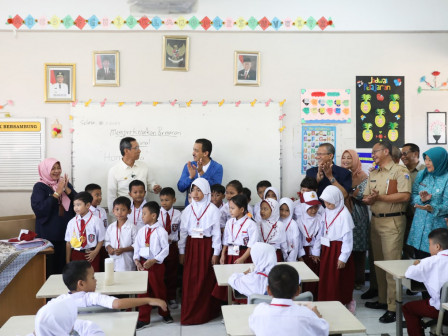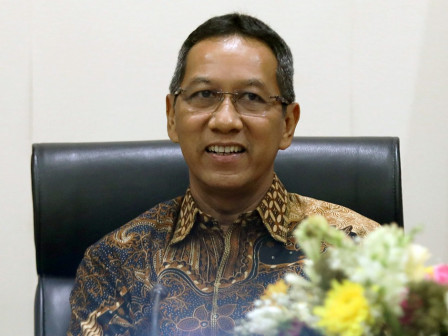City Intensifies Social Aid Program to Lower Gini Ratio
Reported by Aldi Geri Lumban Tobing | Translated by Nugroho Adibrata
The city administration continues to work on tackling poverty in Jakarta, one of which is through data synchronization from various related regional apparatus organizations (OPD).
The economy in Jakarta itself is actually growing
It is done because accurate data is very important to be used in various social assistance programs for people in the middle to lower economic groups.
It is hoped that these programs can reduce the Gini ratio or level of spending inequality. It was conveyed by Jakarta Acting Governor Heru Budi Hartono after he led an executive meeting on poverty data synchronization at the Jakarta City Hall, Tuesday (7/18).
Commemorating Islamic New Year, Heru Prompts Jakartans to Improve Work Ethics"To reduce the Gini ratio in Jakarta, the administration must maintain the poverty line, thus it doesn't go deeper. We have to keep the lower limit. How take care of it? Incessantly provide social assistance or social security to the community. We'll hold on there," he expressed, in the city administration's press release.
To reduce poverty and expenditure inequality, the administration provides various social aid programs. These include subsidized food programs, Jakarta Smart Card, Jakarta outstanding Student Card, Jakarta Child Card, Jakarta Persons with Disabilities Card, Jakarta Elderly Card, and other social welfare programs.
The administration also provides training through Job Training Center, Jakpreneur entrepreneurship training through marketing and capital facilitation programs, and other programs.
He went on to say that spending inequality or the gini ratio is a problem faced by all big cities, both in Indonesia and other countries in the world. The difference in the Gini ratio can occur as there has been Covid-19 for two years. When Covid-19 was declared endemic by President Joko "Jokowi" Widodo on June 21, 2023, the economy in Jakarta started to revive.
"This difference can occur because of Covid-19 for two years ratio. Post-pandemic, the economy began to run and bounce back," he explained.
Another challenge faced by Jakarta when measuring the poverty rate is the relatively high mobility of the population, such as the many newcomers to Jakarta who do not have permanent jobs or workers who were affected by Termination of Employment (PHK) and their businesses were disrupted during the pandemic.
Itrequires a solid strategy between the central and regional governments in synergizing population control policies, integrated data-based information systems, and synchronizing central-regional program targets, especially for non-Jakarta KTP.
"The economy in Jakarta itself is actually growing, so there are groups that enjoy additional income. When contrasted, this is what makes it lame. But, once again, the Jakarta Provincial Government is working hard so that we can withstand the poverty line. Then, we can help them with their lives," he explained.
According to data from the Central Statistics Agency, Jakarta's poverty rate in March 2023 year on year (yoy) improved (4.44%) or by 24.21 thousand poor people were successfully eradicated. This performance improvement was influenced by productive economic activities that were increasingly active and poverty alleviation programs that were becoming more effective in Jakarta. The administratioj continues to boost the target of accelerating the elimination of extreme poverty by 0% by 2024.




